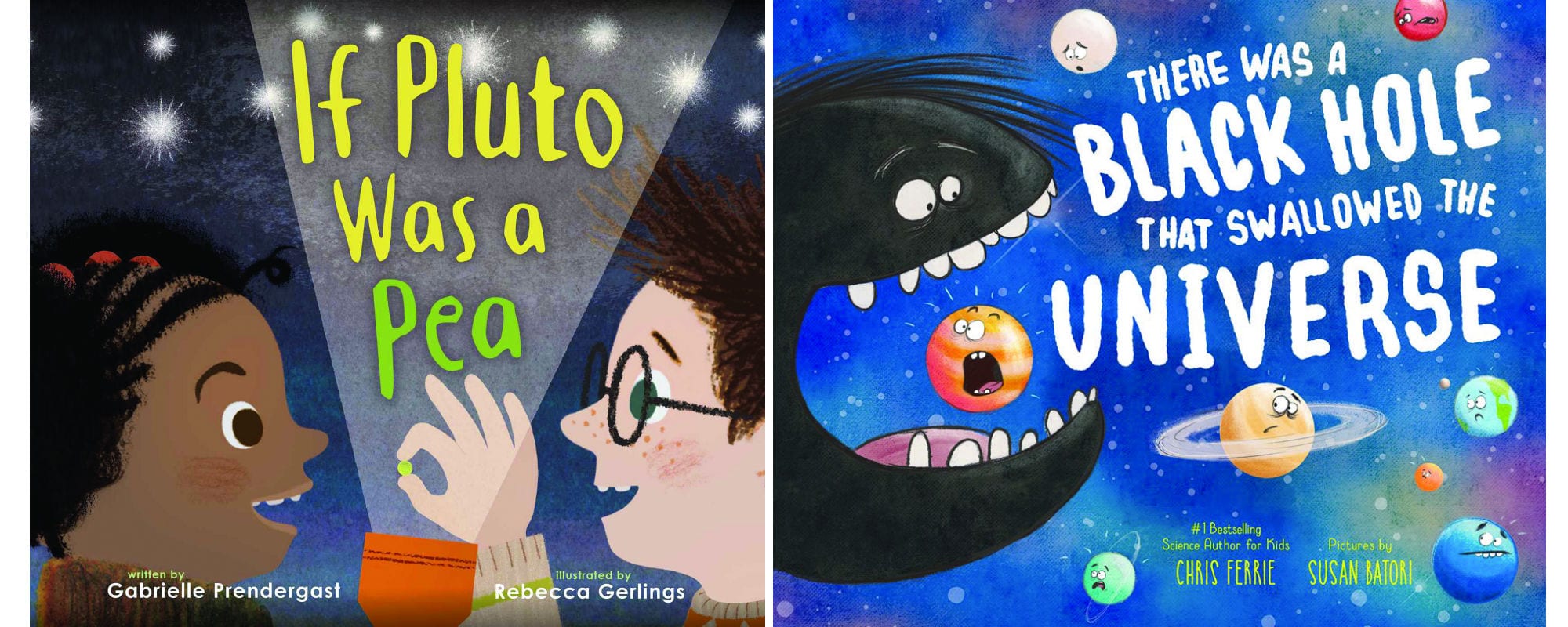
“Space is big. Really big. You just won’t believe how vastly, hugely, mind-bogglingly big it is.” Anyone who self-identifies as a nerd (or is friends with a nerd) will recognize that quote from Douglas Adams’s The Hitchhiker’s Guide to the Galaxy, a novel that sums up the very real problem of trying to grasp the inhuman enormity of outer space with a tiny human brain. Two new picture books attempt to put our universe into perspective.
If Pluto Was a Pea approaches this task somewhat literally. Two kids – one a bespectacled, bed-headed boy, the other a girl with cornrows and adorable pigtail buns – head out into a vast rural backyard to enjoy the night sky. Right away, the girl starts in on Pluto, imagining the dwarf planet as a pea and comparing it to other nearby objects: the sun would be the size of their tent; Earth would be a golf ball, etc. The kids then do the same for everything in our solar system, including Pluto’s multiple moons, one of which would be too small to even see.
The overall concept is simple, if a little underdeveloped. It is helpful and smart to use everyday objects to establish the relative sizes of planets and moons, and Rebecca Gerlings’s illustrations do a good job of adding action to what is essentially a lecture. But it’s not entirely clear why the kids are on this topic in the first place. It’s also unclear why they (and the book) choose Pluto as their basis of comparison, given the ongoing scientific debates over its planetary classification. As a gateway book to more involved discussions of space, however, If Pluto Was a Pea is charming and educationally solid.
There Was a Black Hole that Swallowed the Universe is more sly, playful, and ambitious in its attempt to provide kids with a sense of galactic scale. The book is a rewrite of “There Was an Old Lady Who Swallowed a Fly,” with the titular gravity-rich space-time event (depicted here as a giant orb-like creature with eyes and a mouth) gobbling everything in sight. It starts with the universe and eventually chomps its way down through stars, planets, cells, atoms, and, finally, a quark – after which, everything goes dark. Shining a black light on the pages in the dark reveals a counter-narrative of universal creation: three quarks form the neutron, the neutron is housed in the atom, and so on back up the ladder of existence.
Chris Ferrie, who created the Baby University series of toddler science books, is adept at exploring complex ideas in ways that are easily grasped. Susan Batori’s cartoonish illustrations mostly eschew scientific rigour in favour of fun, but the book never feels glib or like it is talking down to young readers. Any book that can make the concept of quarks seem as solid and concrete as a planet-eating space thing is a winner – even for non-nerds.
 Contact us via email
Contact us via email

